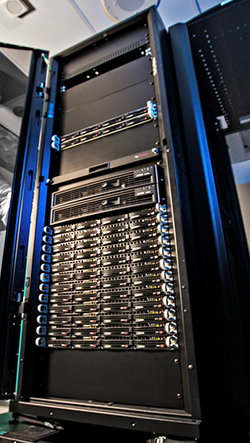NARAC utilizes a sophisticated distributed computer environment to model the transport and fate of hazardous materials released into the atmosphere. For most release scenarios, initial NARAC atmospheric dispersion are generated within 10–15 minutes. However during the 2011 Fukushima Dai-ichi nuclear power plant accident, several hours of compute time were required to perform the data processing steps and generate high-resolution and/or long range dispersion predictions for complex release scenarios involving multiple radionuclides. To reduce model simulation turnaround times, upgrades have been made to both the hardware and software used in NARAC’s modeling system. A compute cluster with 336 processing cores and over 1 terabyte of internal memory was installed in the NARAC facility in 2012. Core physics codes and data processing utilities were optimized and/or reconfigured to utilize the new cluster computing capability.
Dramatic performance improvements have been observed for benchmark simulations with model run-times reduced by factors of 10 to 100. More complex model simulations and data processing steps that previously required several hours of compute time now can be performed in minutes.
| Code | Run-time (before) |
Run-time (after) |
Speed-up factor |
|---|---|---|---|
| LODI | 120 minutes | 4 minutes | 30x |
| ADAPT | 96 minutes | 3 minutes | 32x |
| WRF | 120 minutes | 7 minutes | 18x |
| BIN | 60 minutes | 6 minutes | 10x |
| POPULATION | 40 minutes | 2 minutes | 20x |





